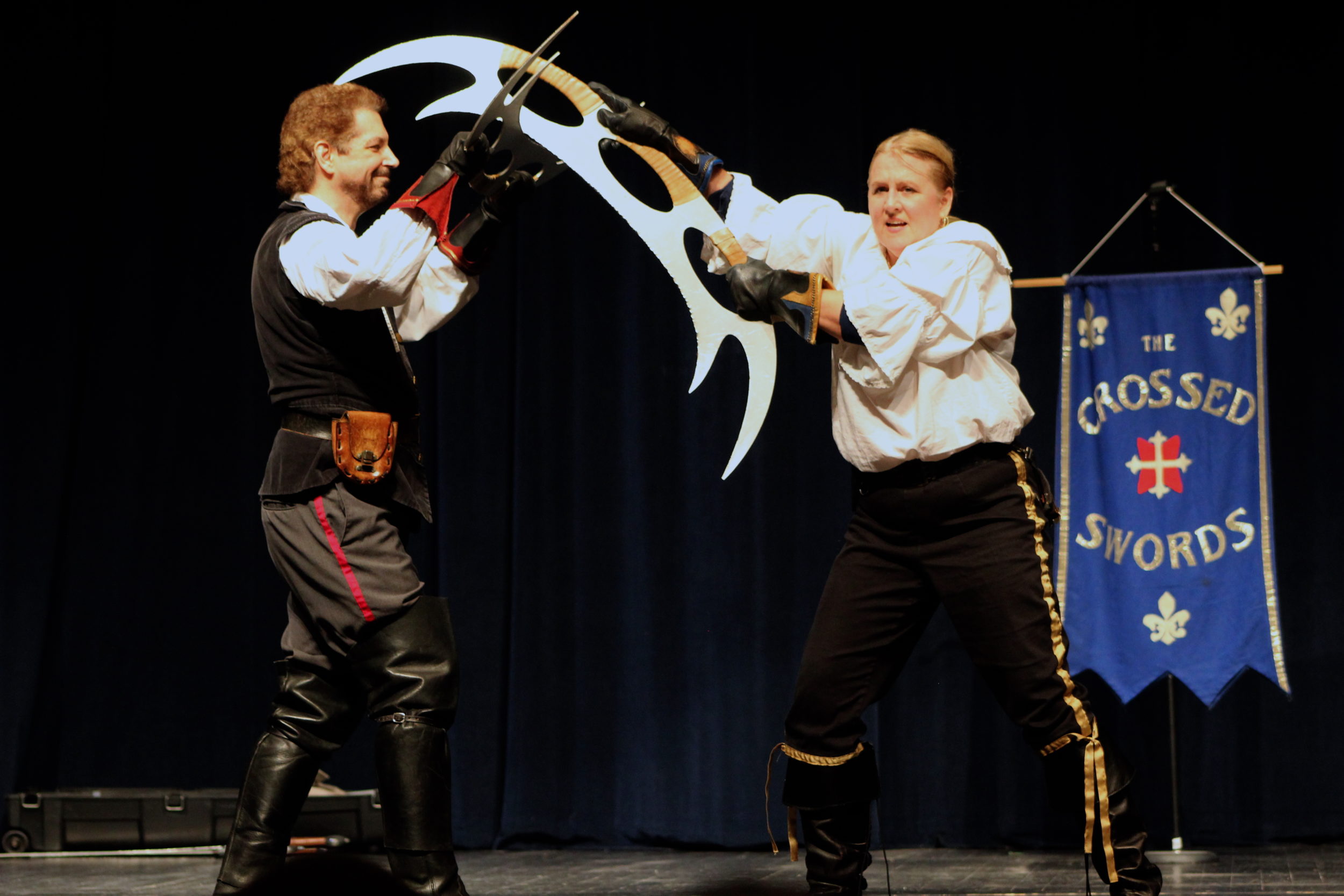
“It’s not as big as the America’s Got Talent stage, for sure,” Nicole Harsch said whilst walking around stage twirling a three-foot rapier blade and adjusting her tunic.
Nicole Harsch and Mike Sakuta are world-famous “stage combat professionals.” They have traveled all across the globe, from Paris, Moscow, Berlin, Canada and the U.S., for their staged combat performances and choreography. You can see their work on America’s Got Talent, at Dragon Con and even in a few Star Trek Klingon battle scenes.
This past week, the Georgia State Clarkston Campus celebrated its 50th anniversary of the opening of the Marvin Cole Auditorium with a performance from the world-famous duo, Crossed Swords. This duo shared some insight from their twenty years of experience performing on stage across the globe. They gave us some pointers.
It was during college that the duo began taking staged combat as a profession seriously. They used it to fund their college careers, which they affectionately refer to as “fighting [their] way through college.” They performed at renaissance festivals on weekends and invested those earnings back into their education, an education that would later grant them their Master’s, Ph.D. and even a teaching experience at the very Georgia State campus they performed at.
Because this fighting is so complex, they jokingly exclaim how ridiculous stage fighting is in most medieval movies. Their best advice: watch the background. Harsch and Sakuta point out that many times, the extras do everything from dropping their weapons, to missing contact between the swords and even holding their shields uselessly either above their heads or behind them.
One example of silver screen dramatization is the famous “knocking or twirling one’s sword out of their hand” move’. Harsch demonstrates that it is not that easy because of a little thing called grip; knocking a sword into the base of another isn’t enough to cause the other fighter to loosen his fingers and drop his sword. So every time a sword is knocked or twisted out of an opponent’s hand, it’s purposely dropped.
They say that most fighting on-screen is based on a few simple moves; to increase tension in scenes, actors don’t advance their moves but rather repeat simple moves quickly, giving the illusion of a larger fight. To prove how easy these moves really are, Harsch and Sakuta demonstrated a performance while sitting in chairs.
Real sword fighting involves full-body movements with everything from foot placement to body blocking on stage, even borrowing movements like the “passing step” from fencing and baton twirling. As for the Star Trek Klingon combat, it’s not as mystical as you might think. The famous, oddly-shaped Klingon Bat’leth fights more like a quarterstaff than a sword. The intimidating sword twirling is just the figure-eight move from baton twirling.
While the combat is all staged, it’s still very much dangerous. Harsch and Sakuta made it clear to their audience at the Perimeter festival with the message, “Do not try this at home.” They explain that while anyone can do staged combat and theatrical fighting, it takes practice and proper training. The fighting might be fake, but the injuries can be very real.
“You can’t pick this up by just watching us. We have a tendency to make it look easy. But it’s very dangerous and you have to practice,” Harsch said.
Because every venue differs in stage size, costumes and even atmosphere, a light sprinkle of sand on the ground can lead to a dislocated shoulder or a concussion. The moves are performed and planned ahead of time, but any uncalculated addition in the arena, such as sand, can alter footing and slow down momentum, leading to an accident.
And there must be a lot of trust between performers. Harsch could miss the inside of Sakuta’s thigh and accidently land a steel toe right in his groin. Sakuta could swing out a little too far and catch Harsch’s head. Much like art, each scene is a dance. It must be choreographed and practiced. As such, the skill must be treated with honor because you never know when someone might toss down gloves to commence a duel.
